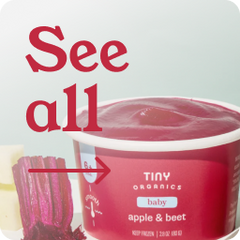Sleep Training Methods Explained

Parents of newborn babies tend to be pretty tired - babies just don’t sleep for long stretches at a time when they’re very young. Between mixed up days and nights and their small stomach size, it’s normal for babies under three months to wake up multiple times in the night, even if that normal is exhausting for new parents. But once your baby is around 4-6 months, you might begin to think about methods of training your baby to sleep on their own.
The Cry It Out method of sleep training, also known as the extinction method, can help both babies and parents get the sleep they need. Here’s a guide to what you need to know about and when to do it, and tips on deciding if this is the sleep training method that will work for your family.
How Does Cry It Out Work?
As you can probably guess from the name, cry it out as a form of sleep training means putting your baby in the crib fully awake, and letting them cry or fuss on their own until they go to sleep. It’s about helping your baby learn to fall asleep on their own and soothe themselves back to sleep when they wake up without any crutches like rocking or feeding them to sleep.
While it can seem like a harsh method at first - after all, no one likes to hear their baby cry! - many believe that it’s actually harder on the parents than the baby.
The goal of the cry it out method is to let your baby cry and fuss on their own, until they wear themselves out and fall asleep without you. In the beginning, this can take up to 45 minutes to an hour, which can seem like an eternity when you’re on the other side of your baby’s door listening to them cry! But typically, your baby will cry less and less over the first three nights, and then their crying usually ends somewhere between night four and seven. Soon they’ll begin to fuss for just a few minutes before going to sleep - or they’ll simply fall asleep right away on their own.
When Do You Let Babies Cry It Out?
Sleep training is usually not started until your baby is about 4-6 months ago, no matter which method you use. Very young babies still need to wake up regularly at night to feed, and so beginning too early tends not to be very effective. But by 5-6 months, they can typically sleep through most of the night without needing to eat, and so you can begin sleep training them at that point.
Should the Baby Cry It Out For Naps?
If you’re using the cry it out method for sleep training during the night, you should also use it during naptime as well so your baby has a consistent experience falling asleep at all times. If your baby takes shorter naps, you may want to limit how long you let them cry before you try another method or just give up on that day’s nap completely.
Falling asleep alone during naps will probably get much easier after the first week of sleep training - your baby will be more accustomed to being put in the crib and knowing that means it’s time for sleep. And they will develop their own self-soothing methods that help them fall asleep on their own during naps as well as during the night.
Cry It Out Tips for Parents
When you’re thinking about sleep training your baby using the cry it out method, there are several tips that can help your training go smoothly.
- Avoid overtiring your baby. Babies who are overtired tend to have a harder time falling asleep, so be sure yours isn’t napping too little during the day. (Easier said than done, we know!)
- Look for signs of tiredness. Babies who are tired and ready for sleep might rub their eyes, get cranky, suck their thumb, or show other signs. This means it’s time to get baby in bed before the overtiredness kicks in.
- Set a sleep routine. For 30-45 minutes before putting your baby in the crib, help them wind down and get ready for sleep. This process might include reading a book, having a bath or a final feeding, or a little lullaby.
- Don’t respond to protests. It’s normal for babies to cry quite a bit during the first few days of sleep training - but don’t give in, if you can help it! It will be a rough few nights to begin, but know that you’re helping your baby learn how to fall asleep alone, which is a valuable skill.
What does Tiny recommend?
We recommend choosing a method that works best for you and your baby! Do your research, consider the pros and cons, speak to friends and family (or your favorite mom group!), and don’t feel pressured into any method. It’s a parenting decision that’s only yours to make.























